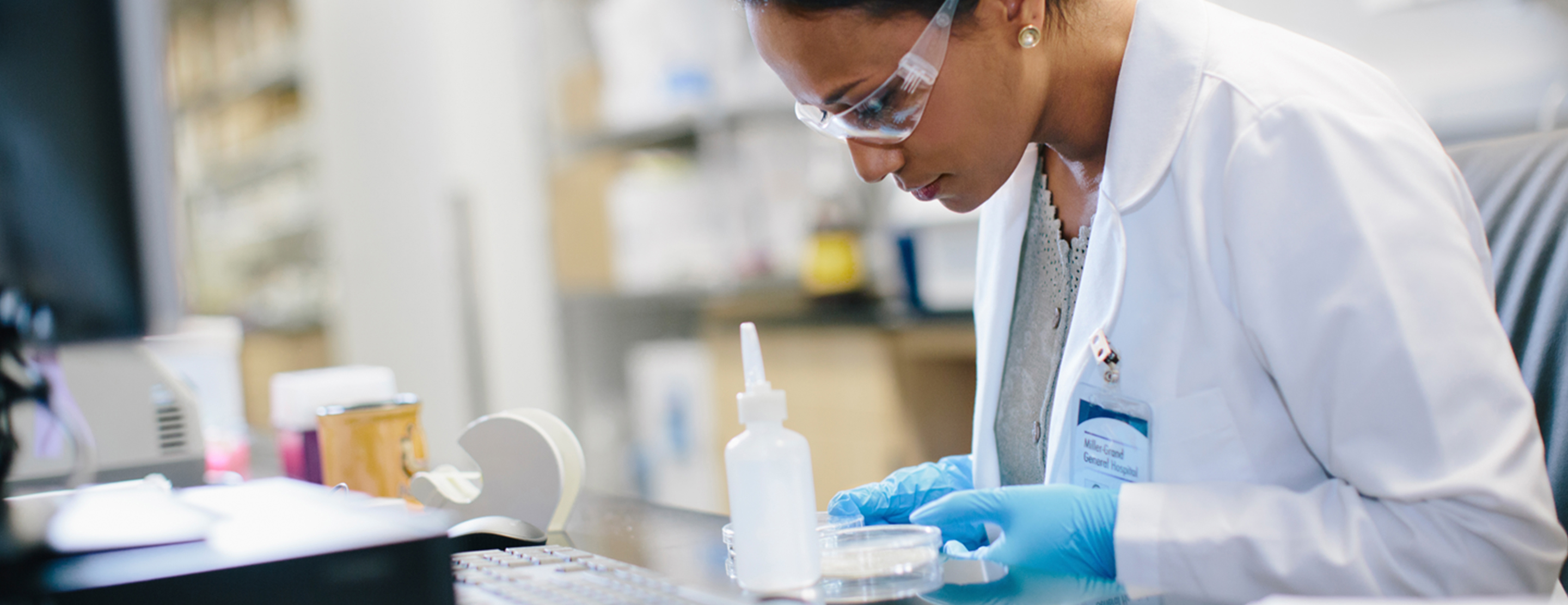
Fecal culture
Definition
A fecal culture is a lab test to find organisms in the stool (feces) that can cause gastrointestinal symptoms and disease.
Alternative Names
Stool culture; Culture - stool; Gastroenteritis fecal culture
How the Test is Performed
A stool sample is needed.
There are many ways to collect the sample.
You can collect the sample:
- On plastic wrap. Place the wrap loosely over the toilet bowl so that it is held in place by the toilet seat. Put the sample in a clean container given to you by your health care provider.
- In a test kit that supplies a special toilet tissue. Put it in a clean container given to you by your provider.
Do not mix urine, water, or toilet tissue with the sample.
For children wearing diapers:
- Line the diaper with plastic wrap.
- Position the plastic wrap so that it will prevent urine and stool from mixing. This will provide a better sample.
Return the sample to the laboratory as soon as possible. Do not include toilet paper or urine in the specimen.
In the lab, a technician places a sample of the specimen in a special dish. The dish is then filled with a gel that boosts the growth of bacteria or other germs. If there is growth, the germs are identified. The lab technician may also do more tests to determine the best treatment.
How to Prepare for the Test
You will get a collection container for the stool specimen.
How the Test will Feel
There is no discomfort.
Why the Test is Performed
The test is performed when your health care provider suspects that you may have a gastrointestinal infection. It may be done if you have severe
Normal Results
There are no abnormal bacteria or other organisms in the sample.
Talk to your provider about the meaning of your specific test results.
What Abnormal Results Mean
Abnormal results may mean you have an
Risks
There are no risks.
Considerations
Often other stool tests are done in addition to the culture, such as:
Gram stain of stool Fecal smear Stool ova and parasites exam
References
Beavis, KG, Charnot-Katsikas, A. Specimen collection and handling for diagnosis of infectious diseases. In: McPherson RA, Pincus MR, eds. Henry's Clinical Diagnosis and Management by Laboratory Methods. 23rd ed. Philadelphia, PA: Elsevier; 2017:chap 64.
DuPont HL. Approach to the patient with suspected enteric infection. In: Goldman L, Schafer AI, eds. Goldman-Cecil Medicine. 25th ed. Philadelphia, PA: Elsevier Saunders; 2016:chap 283.
Hall GS, Woods GL. Medical bacteriology. In: McPherson RA, Pincus MR, eds. Henry's Clinical Diagnosis and Management by Laboratory Methods. 23rd ed. Philadelphia, PA: Elsevier; 2017:chap 58.
Semrad CE. Approach to the patient with diarrhea and malabsorption. In: Goldman L, Schafer AI, eds. Goldman-Cecil Medicine. 25th ed. Philadelphia, PA: Elsevier Saunders; 2016:chap 140.
Siddiqi HA, Salwen MJ, Shaikh MF, Bowne WB. Laboratory diagnosis of gastrointestinal and pancreatic disorders. In: McPherson RA, Pincus MR, eds. Henry's Clinical Diagnosis and Management by Laboratory Methods. 23rd ed. Philadelphia, PA: Elsevier; 2017:chap 22.
Review Date: 04/16/2018
The information provided herein should not be used during any medical emergency or for the diagnosis or treatment of any medical condition. A licensed physician should be consulted for diagnosis and treatment of any and all medical conditions. Call 911 for all medical emergencies. Links to other sites are provided for information only -- they do not constitute endorsements of those other sites. Copyright ©2019 A.D.A.M., Inc., as modified by University of California San Francisco. Any duplication or distribution of the information contained herein is strictly prohibited.
Information developed by A.D.A.M., Inc. regarding tests and test results may not directly correspond with information provided by UCSF Health. Please discuss with your doctor any questions or concerns you may have.





